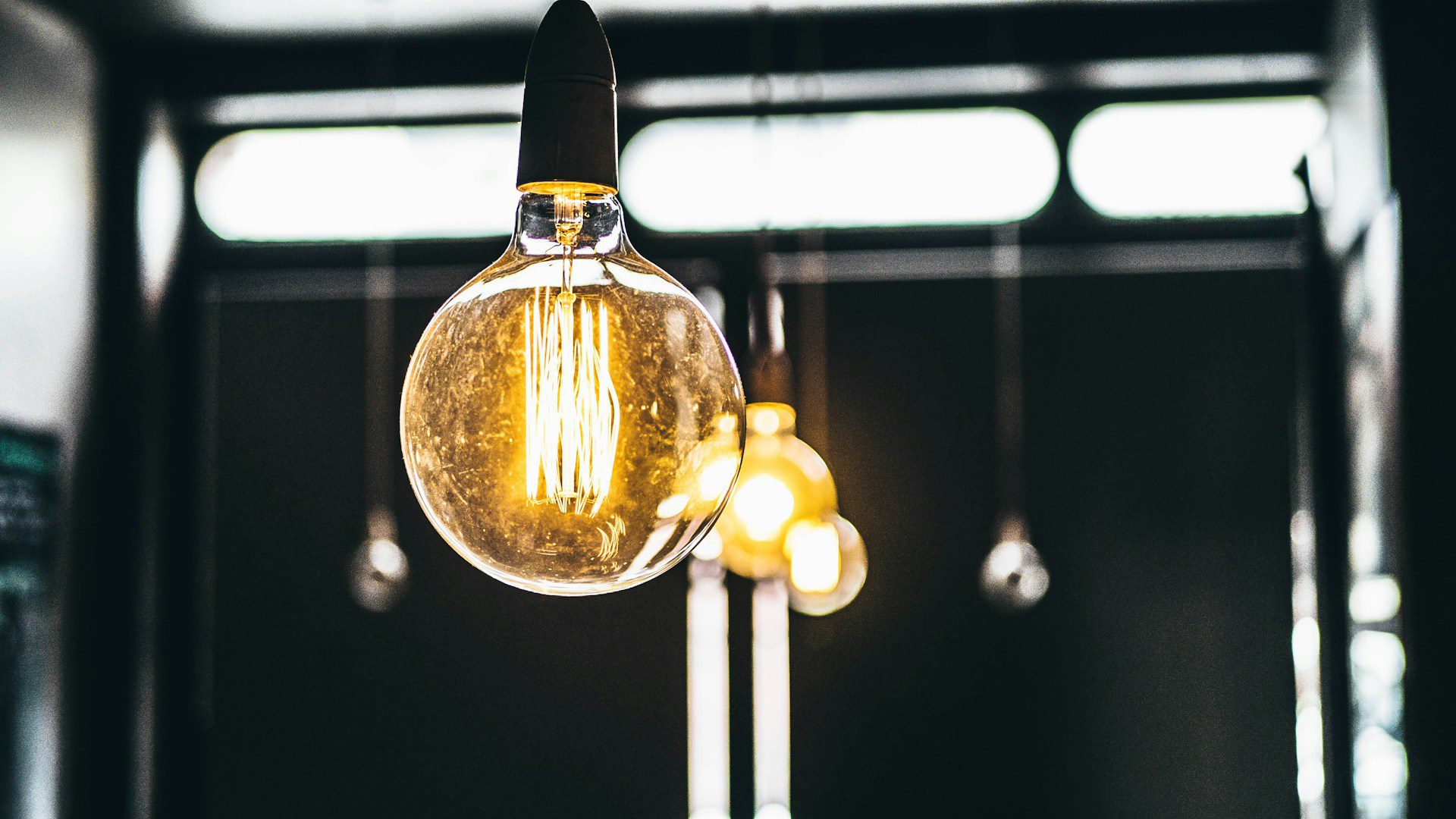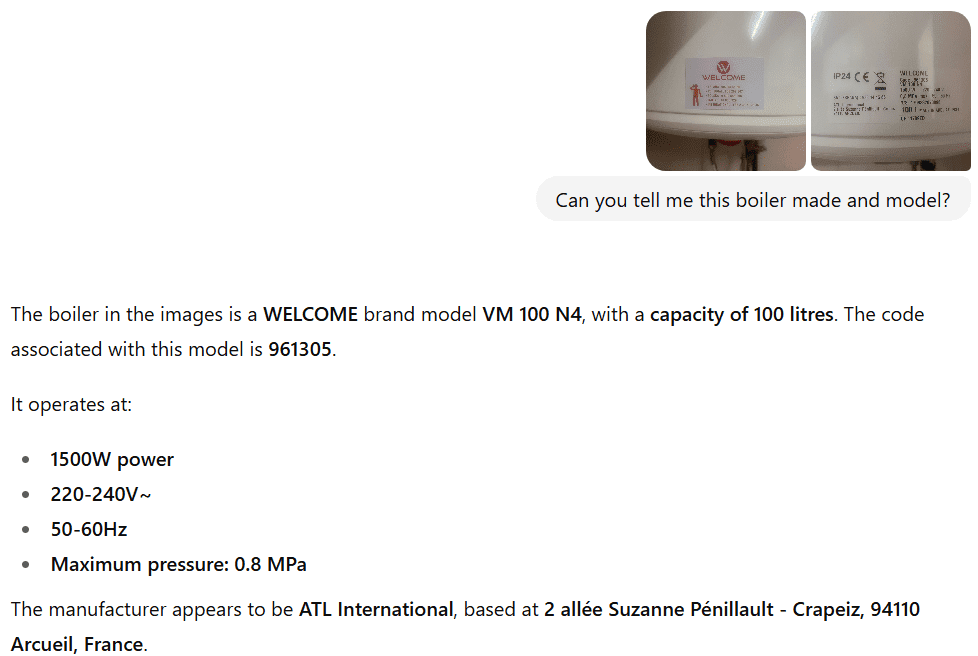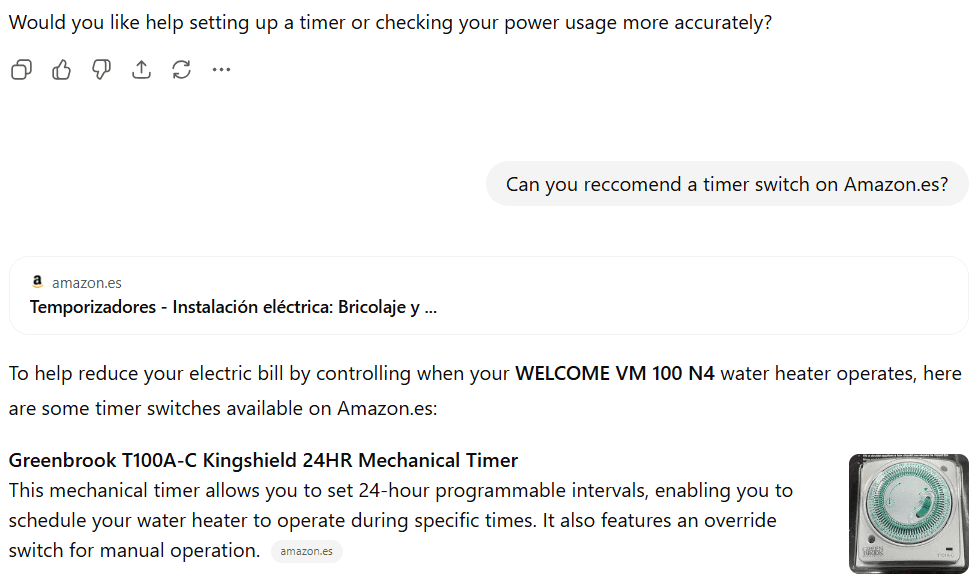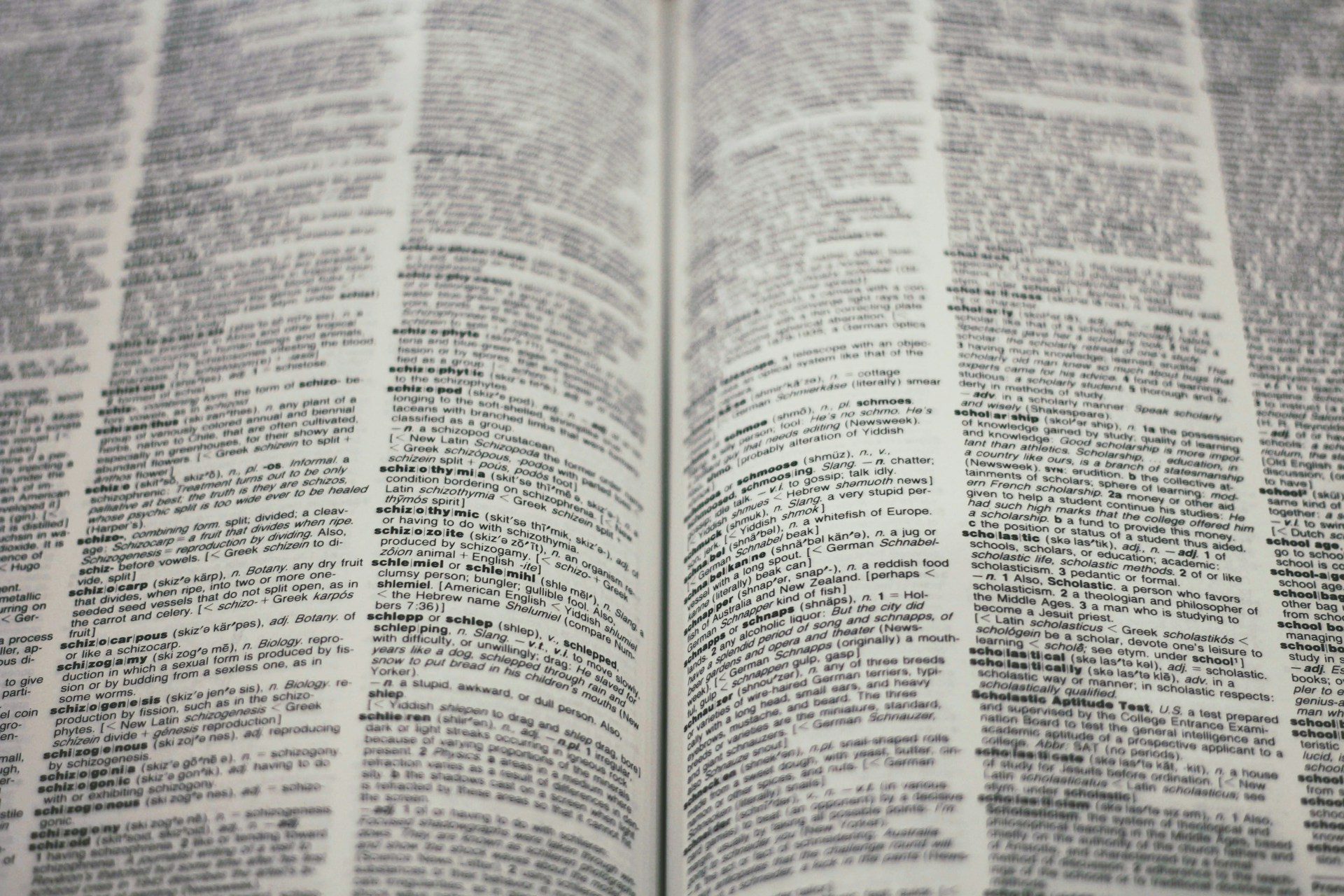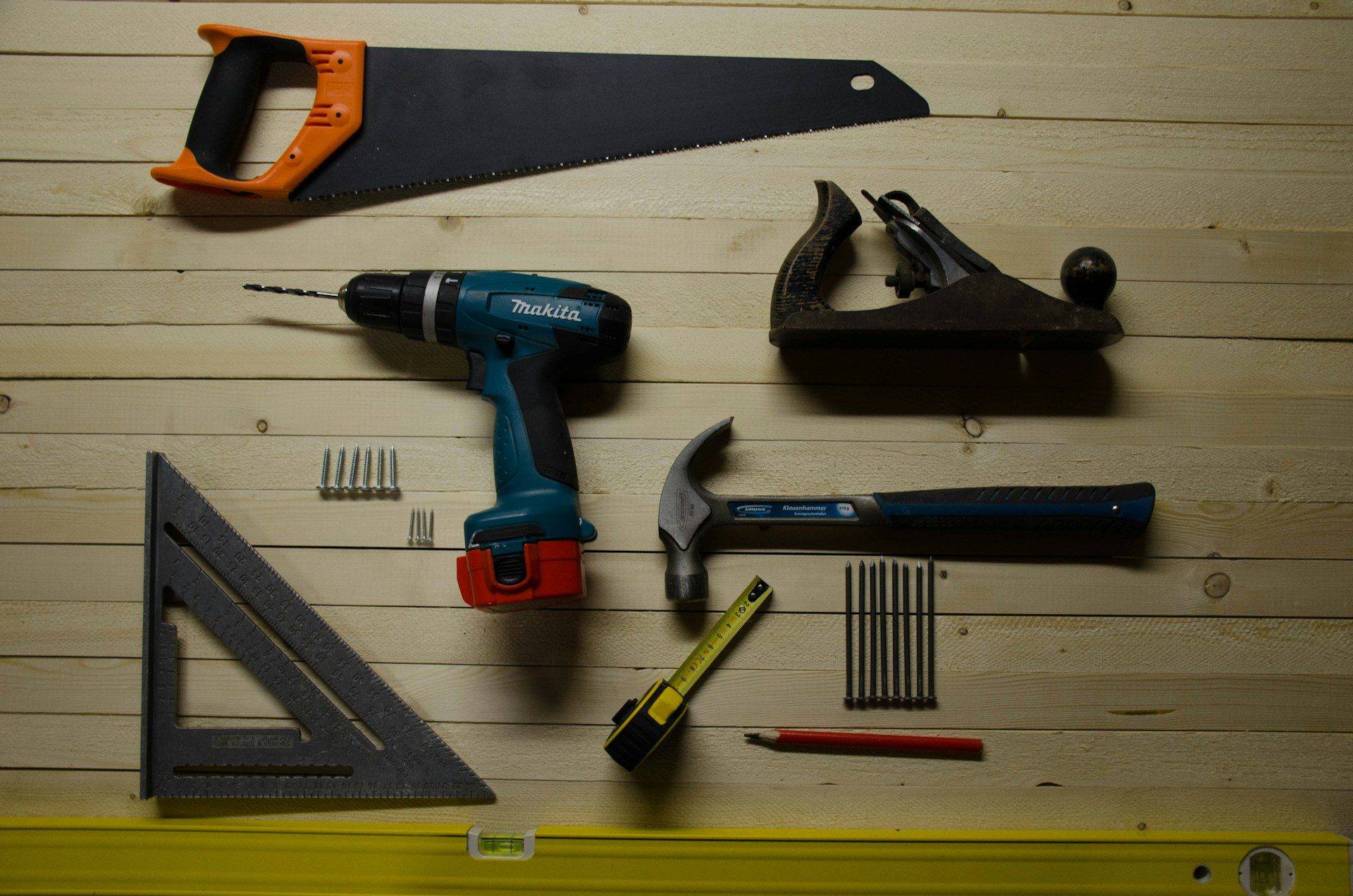AI Photo Prompting: An Introduction to Visual Problem-Solving
AI Photo Prompting: An Introduction to Visual Problem-Solving
I’ve read lots of guides about crafting detailed written prompts to get the best responses from AI but not much about using visual inputs. I’ve discovered that sometimes a simple photo gets better results than paragraphs of text. After realising the power of photo prompting in early 2025, it’s something that I now use daily. Combining my iPhone camera and ChatGPT (which excels at image analysis and text extraction) gives me instant information and answers with a very short input.
Photo prompting is exactly what it sounds like – using images as inputs to AI rather than trying to describe complex situations in text. Whether it’s photographing a confusing document, a broken appliance, or products you’re comparing, visual inputs often give AI the context it needs to provide genuinely helpful solutions. Over the past year, this approach has consistently delivered better results than my attempts to write detailed explanations.
Here’s how I discovered just how powerful this can be.
At the beginning of 2025, I moved to Spain with my family on a Digital Nomad Visa. We settled into our new life, found a rental house, and started paying bills for the first time in March.
Then my wife sent me a WhatsApp that made me stop.
“We’ve used €70 of electricity in 10 days,” she wrote, attaching the bill PDF. I stared at the message. €70 in 10 days meant we were heading for a €210 monthly bill – way over our budget, especially since we’d been conservative with usage.
I knew Spain had much cheaper electricity than the UK, so the problem had to be our consumption. But when I opened the PDF document, my limited Spanish couldn’t decode what I was looking at. The bill was full of technical terms and complex breakdowns that meant nothing to me.
After some back and forth, my wife suggested something I hadn’t considered: “Why don’t you ask ChatGPT to read the bill?”
I’d used ChatGPT for document analysis before with little success, but I persevered and this time I was impressed. I started with a simple prompt: “Can you read my bill?” and uploaded the PDF.
What happened next amazed me. ChatGPT didn’t just translate the Spanish – it provided a complete breakdown of our usage patterns, identified peak vs off-peak pricing (something I’d never encountered in the UK), and when I asked if €210 was high, confirmed it was definitively yes.
But here’s where the unexpected discovery began. When I asked why it could be so high, ChatGPT listed potential causes – one being our boiler. I suspected this too, but had no way to investigate further.
ChatGPT asked for the boiler make and model. I was in a rented house with no idea what we had. “Can I take a photo of the boiler to understand its energy usage?” I asked.
The boiler had very little information visible and few controls, so I photographed the specification stickers – making sure to frame clearly and capture any brand names, model numbers, and technical details visible. From just those photos, ChatGPT immediately identified it as a WELCOME VM 100 N4 with 1500W power consumption, confirmed this was likely the source of our high usage, and then – without me asking – suggested timer plugs as a solution.
I hadn’t even thought of timer plugs. This wasn’t me saying “tell me how to reduce energy consumption” – this was ChatGPT seeing the problem in the photos and suggesting the fix.
But it didn’t stop there. ChatGPT calculated that at 1500W, if the boiler ran for 4 hours per day, that’s 6 kWh/day – a significant portion of our electricity usage. Using the bill data it had already analysed and understanding our household’s hot water needs (showers at 7 AM and 9 AM), it worked out the most cost-effective schedule: heat from 5:30-7:30 AM, then off for the rest of the day.
When I started shopping, ChatGPT recommended specific features to prioritise – particularly energy monitoring. I found Meross plugs on Amazon, photographed different models with their descriptions, and ChatGPT helped me compare them. It explained why the 16A model with energy monitoring was perfect for my 1500W boiler, even helping me choose between models based on features and price.
Then I had another thought: “What other appliances are consuming energy?” I went around the house photographing everything – dishwasher, washing machine, TV, anything I could find.
For each appliance photo, ChatGPT provided not only consumption estimates but the best cycles to use and optimal timing. Think about what was happening from these simple photos:
Visual identification: Recognising appliance models from photos
Translation: Converting Spanish specifications and bill terminology
Technical research: Calculating energy consumption (1500W × 4 hours = 6 kWh/day)
Mathematical analysis: Optimising usage across time-based pricing
Product recommendations: Suggesting specific Meross timer plugs with energy monitoring
Strategic planning: Creating integrated energy scheduling (5:30-7:30 AM heating window)
Troubleshooting: Diagnosing why our consumption was so high
None of this was planned. I didn’t start with a strategy to optimise our entire household energy consumption. It all grew naturally from a few visual inputs – a PDF bill, some boiler photos, appliance pictures.
Each photo revealed new information that ChatGPT built upon, creating a comprehensive solution I never could have imagined when I first asked it to read that bill.
Each photo revealed new information that ChatGPT built upon, creating a comprehensive solution I never could have imagined when I first asked it to read that bill.
After the plugs arrived (about €8 each) and I’d set them up with ChatGPT’s continued guidance, I bought more and optimised timing for all our major appliances. By June, my monthly bill was down to €55 – a massive €140/month (67% reduction, saving €1,680 annually).
The Meross plugs paid for themselves in three days, but the real breakthrough was discovering how visual inputs could unlock solutions I didn’t know existed. What started as a simple translation question had grown into a complete household energy transformation.
This experience showed me something crucial: AI photo prompting isn’t just about getting answers to questions you know to ask. It’s about discovering solutions you never knew were possible through simple visual inputs.
Over the coming weeks, I’ll share how this same visual approach helped me buy a car with complete confidence in a foreign country, navigate language barriers instantly, master cooking techniques that had always eluded me, and solve home maintenance problems that would normally mean expensive call-outs.
This compound problem-solving approach – where one photo unlocks a chain of optimisations I never could have planned – mirrors how I help organisations streamline their operations. Start with one inefficiency, follow where the analysis leads, and often discover systematic improvements that dwarf the original problem.
Take a photo, ask a question, follow where it leads. Simple input, powerful results.

